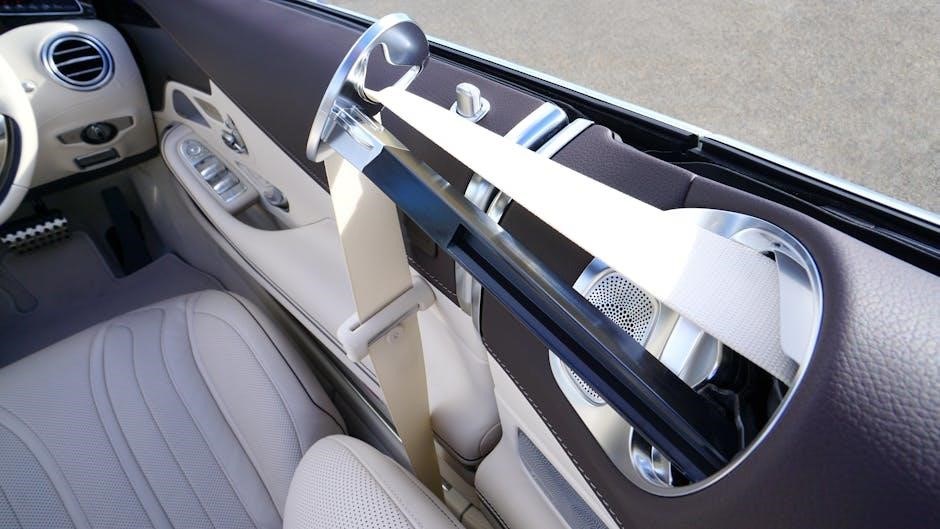and following manufacturer recommendations carefully always․
Purpose of Adjustable Proportioning Valve
The purpose of an adjustable proportioning valve is to allow for customization and fine-tuning of brake systems, particularly in performance, racing, and special purpose vehicles․ This valve enables drivers to adjust the front/rear bias of their braking system, which is essential for optimal braking performance under various conditions, such as changes in weather, track conditions, or vehicle loading․ By adjusting the valve, drivers can achieve a balanced braking system, where the front and rear brakes work in harmony to provide stable and controlled stopping․ The adjustable proportioning valve is a critical component in achieving this balance, and its purpose is to provide a means of adjusting the brake force distribution between the front and rear wheels․ This is particularly important in vehicles with custom brake systems, where the standard proportioning valve may not provide the optimal brake force distribution․ The valve’s adjustability allows drivers to dial in the perfect balance of brake force, resulting in improved braking performance and safety․

Installation Instructions

Installation requires careful planning, using
- manufacturer guidelines
and following specific procedures always․
Mounting the Proportioning Valve
Mounting the proportioning valve is a critical step in the installation process, requiring attention to detail and careful planning․ The valve should be mounted on the same side as the master cylinder, using the provided mounting hardware and following the manufacturer’s guidelines․ It is essential to ensure the valve is properly secured and aligned to prevent any damage or interference with other components․ The mounting location should also be easily accessible for future adjustments and maintenance․ Using a
- step-by-step guide
or consulting the manufacturer’s instructions can help ensure a successful mounting process․ Additionally, it is crucial to verify the valve’s compatibility with the vehicle’s brake system and other components to prevent any potential issues or conflicts․ By following the proper mounting procedures, users can ensure a safe and reliable brake system․ The valve’s mounting position can affect its performance, so it is vital to get it right․

Adjustment Procedures
Adjustment procedures involve turning the valve to achieve optimal brake balance, using
- specific steps
for precise control and accurate results always․
Initial Adjustment Steps
The initial adjustment steps for the adjustable proportioning valve involve turning the valve to full increase and then to full decrease, counting the number of turns․ This is an important step as it allows for the determination of the starting point for the adjustment․ The valve is then increased by half the number of turns counted in the previous step․ This is the starting point for the adjustment and it is crucial to follow this step carefully․ The next step involves testing the vehicle to ensure that the front and rear brakes are balanced․ The valve can be adjusted further to achieve the optimal balance․ It is essential to refer to the manufacturer’s instructions for specific guidance on the initial adjustment steps․ By following these steps, the adjustable proportioning valve can be properly adjusted to achieve optimal brake performance․ The process requires patience and attention to detail to ensure accurate results․
Testing and Fine-Tuning
Testing and fine-tuning the adjustable proportioning valve is crucial to ensure optimal brake performance․ The process involves testing the vehicle under various conditions, such as different speeds and loads, to determine if the front and rear brakes are balanced․ The valve can be adjusted in small increments, and the vehicle retested, until the optimal balance is achieved․ It is essential to use a systematic approach to fine-tuning, making small adjustments and testing the vehicle after each adjustment․ The use of a
- checklist
can help to ensure that all aspects of the brake system are tested and that the valve is adjusted correctly․ By following a thorough testing and fine-tuning procedure, the adjustable proportioning valve can be optimized to provide consistent and reliable brake performance․ This process requires patience and attention to detail, but the end result is a brake system that is tailored to the specific needs of the vehicle․

Important Considerations
Consider vehicle specifications, manufacturer recommendations, and safety precautions when installing the valve, ensuring a proper and safe setup always and carefully following guidelines․
Compatibility and Recommendations
When selecting an adjustable proportioning valve, it is essential to consider compatibility with your vehicle’s brake system and other components․ The valve should be compatible with the master cylinder, brake lines, and other hardware to ensure proper function and safety․ Manufacturers often provide recommendations for compatible components and systems, and it is crucial to follow these guidelines to avoid any potential issues․ Additionally, consult the vehicle’s factory service manual and seek advice from a qualified mechanic or technician if you are unsure about any aspect of the installation or adjustment process․ By considering compatibility and following recommendations, you can ensure a safe and effective brake system that meets your vehicle’s specific needs and requirements, and provides optimal performance and reliability․ The adjustable proportioning valve is a critical component, and proper installation and adjustment are vital to its function and the overall safety of the vehicle․